The Role of the Center of Gravity (CG) in Modern Day Bowling Balls
Nowadays, deciphering ball reaction can be a daunting task. With common misconceptions and pre-conceived notions of ball reaction ritualistically burnt into our minds, it can be difficult to boil down the elements and show what actually does and does not matter. In this article, I will explain the factors that dictate ball reaction and why they are important. I will also show the role of the CG, and how it is used to alter your ball reaction. Remember, this article is to be used as a guide. If you are already fixed on your beliefs and you feel they work for you, then great, there is no need for you to read any further. However, if this sounds like a subject you’d like to learn about, then by all means continue.
First and foremost, the surface of the bowling ball is the most important factor in ball reaction. This is a widely undisputed fact, more surface equals more friction. The next important factor in ball reaction is your pin position. The distance from your Positive Axis Point (PAP) along with the pin height will alter motion down the lane. Once again, this point is recognized as a fact. Moving along, another factor in ball reaction is Mass Bias (MB) location. In bowling balls with a measurable Intermediate Differential (Z-Diff), this point on the ball is marked by a locator pin of some sort. The distance (or degrees) that this locator pin is placed in relation to the PAP can alter ball motion. Generally, the closer to the PAP, the earlier the bowling ball transitions from skid to hook and vice versa. Lastly, the X-Hole is the final tool in fine tuning ball reaction. As shown in the X-Hole Demo video, the location and size of the X-hole can have a direct impact on track flare and ball motion.
So where does the CG come into play?
If it weren’t for antiquated static weight rules, the CG would never factor into the equation, at least not for me. The location of the CG, in the real world, has one utility. It allows the driller to shift enough mass to a specific area of the ball in order to use an X-Hole in that location. This is where the misconception comes into play. The shifting of the CG by itself is not enough to alter the reaction of the bowling ball in any measurable way. In a symmetrical core ball, the core orientation is not changed to the point where it alters the dynamic properties of a bowling ball. Only when mass is taken out with an X-Hole does it affect the ending Radius of Gyration (RG) and Differentials. An experienced driller will know beforehand whether or not an X-Hole will be necessary to obtain a particular reaction. A common practice is to layout a ball leaving 3/4oz of side weight after drilling, but before the X-Hole. This gives the option to leave the ball alone if the reaction is suitable, or use an X-Hole to alter the reaction. More often than not, a small surface adjustment is sufficient in achieving the desired reaction. In any case, the ball will be legal per USBC specifications. If there is no shift in CG, and a sizeable X-Hole is used, there may be issues with the ending side weight being over the USBC limitations.
Now what about CG placement in asymmetrical core balls?
Once again, if there were no limitations on ending static weights, the CG could be ignored. A driller could effectively place the pin in the desired location, the MB in any location and an X-Hole if needed. However, there are more variables with asymmetric core balls that require attention and, once again, it all boils down to ending static weights being within USBC specifications. Not all of these asymmetrical core bowling balls are created equal. You could have two identical bowling balls, both with similar pins and similar starting top weights. The only variable in this experiment would be CG alignment. (See Figure 1)
What he fails to recognize is that by removing mass with the X-Hole, the dynamics of the bowling ball have been changed. More often than not, an X-Hole will increase the Differential of a bowling ball, thus creating a stronger reaction by enhancing flare separation. Any X-Hole, whether it be small and deep, or big and shallow will affect ball reaction to some degree. An X-Hole doesn’t necessarily have to touch the core in order to create a change, but it certainly does help.Laying each ball out with identical Pin and MB locations, Ball #1 would be legal while Ball #2 would be illegal per USBC. (See Figure 2). The ball on the left would be under the static weight limits, while the ball on the right would require an X-Hole to be legal. The two bowling balls would react the same if left alone, however, that is not possible with these rules in place. What happens next is where a common misconception lies. The X-Hole is drilled into Ball #2 (For this example lets say the X-Hole is drilled on the PAP). Joe Bowler goes out and throws both bowling balls, noticing an earlier and stronger roll from Ball #2. So from the information he gathers, Joe assumes that the larger shift in CG is the cause for the change in reaction.
Now obviously, a driller would not be able to use a sizeable X-Hole to create a change of reaction without shifting the CG, so in that respect, it matters. With the given rules, you must shift mass in order to remove mass and remain legal per USBC. The location of the X-Hole is entirely dependant on the location of the CG. For example, if you plan to use an X-Hole down the Vertical Axis Line, then the CG must be located somewhere in the thumb/side quadrant highlighted in red. (See Figure 3)
Once again, I must stress that this article is to be used merely as a guide. These words are not written in stone, as ideas and theories change and adapt over time. Those who recognize, learn and adapt can benefit greatly from the information presented to them, while those who are unwavering in their antiquated beliefs will be left in our wake. I cannot emphasize enough that if something has worked for you, then great, do not change for anyone. The sport of bowling has changed, along with the equipment of today. With it, comes adaptation of beliefs based on the data at hand, and the role of the Center of Gravity is defined.

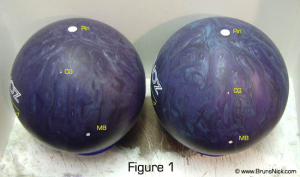
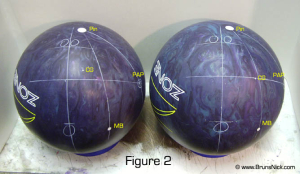
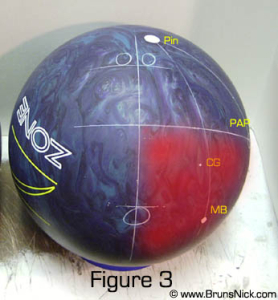

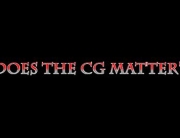


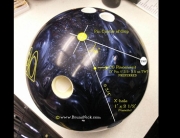
Leave A Comment